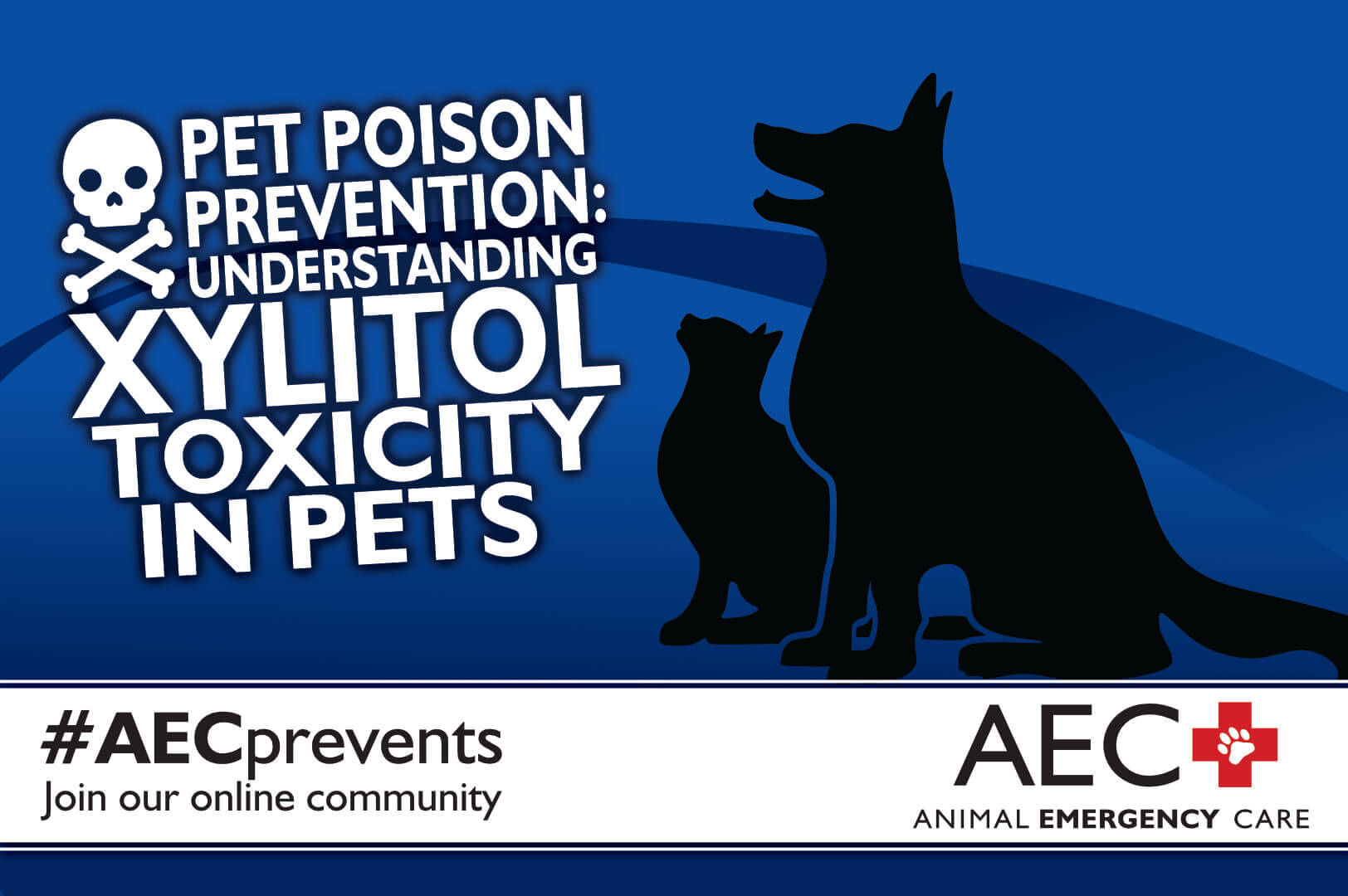The popularity of low sugar and low carbohydrate human diets has led to many creative ways to make food and sweets palatable.Xylitol is a popular sugar substitute used in many foods, supplements, and dental hygiene products. The most common accidental exposures to xylitol include chewing gum, melatonin supplements, sugar-free baking additives, and some forms of peanut butter. It is also a very common component of supplement powders, chewable tablets, toothpastes, and lozenges. Xylitol is extremely dangerous and deadly if untreated. Our Animal Emergency Care team wants pet owners to understand the dangers of xylitol and what to do if your pet accidentally becomes poisoned.
What is xylitol toxicity in pets?
Xylitol is found naturally as sugar alcohol in berries, plums, oats, corn, mushrooms, and other fruits, and has increased recently in popularity as a sugar substitute because of its low glycemic index and dental plaque fighting properties. Xylitol looks and tastes like sugar, has 40% less calories, and is commonly used in diabetic and low-carbohydrate diets. Humans who ingest xylitol may experience a laxative effect. However, pets, especially dogs, who ingest xylitol can become hypoglycemic in 30 minutes and can be affected for more than 12 hours. Xylitol is quickly released in a pet’s bloodstream and triggers the pancreas to release three to seven times the amount of insulin that is normally released with an equivalent amount of sugar. Small amounts can be deadly and only one stick of sugarless gum can cause poisoning in small dogs. Toxicity is variable and pets who ingest large amounts of xylitol are at risk of liver failure and death. Why xylitol affects the liver in dogs and whether cats experience the same effect is not known.
Xylitol toxicity signs in pets
Xylitol toxicity signs may not be immediately obvious and can take up 8 to 12 hours in some cases. However, most dogs will show signs within 30 minutes of ingesting a product that contains xylitol. Signs depend on the amount ingested and include:
- Vomiting
- Weakness or lethargy
- Depression
- Difficulty standing
- Incoordination
- Tremors
- Yellowing of skin or mucous membranes
- Collapse
- Seizures
- Coma
Xylitol toxicity diagnosis and treatment in pets
A xylitol toxicity diagnosis is based on a pet’s ingestion history and clinical signs. Some dogs will not show immediate signs of poisoning, but you must bring them to your veterinarian immediately if you observe them eating anything that contains xylitol. Your veterinarian may induce vomiting if the ingestion has occurred recently, but you should never induce vomiting in your pet unless directed by a veterinarian. Vomiting can be dangerous for some pets with xylitol poisoning and can lead to increased dehydration or aspiration pneumonia. Poisoned pets will likely require an extended hospital stay for emergency care, treatment, and continued observation. Your veterinarian may recommend several blood tests to closely monitor for changes in blood sugar, organ function, and electrolytes. Treatments to combat hypoglycemia, electrolyte imbalances, and potential liver failure may include:
- Intravenous (IV) dextrose
- IV fluids to prevent dehydration and electrolyte imbalances
- Liver protecting medications
- Hourly blood glucose tests for more than 12 hours
- Anti-nausea medication
- Heart rate and blood pressure monitoring
- Body temperature monitoring and regulation with specialized warming pads
- Anticonvulsants if seizures develop
Dogs who are treated immediately for xylitol toxicity will usually recover. However, dogs who do not receive immediate treatment or who have ingested large amounts of xylitol that has affected their liver have a low survival chance.
Financial planning for treatment of xylitol toxicity in pets
Pets undergoing xylitol toxicity treatment often require an extended hospital stay and several checkups which can result in a large veterinary bill. However, pet health insurance like Trupanion will ensure you can cover the costs for your pet’s emergency care for an accidental poisoning. Trupanion will pay your veterinary clinic directly which eliminates the need to submit paperwork and wait for reimbursements. Other alternative payment options include:
- Care Credit — Care Credit offers specialized credit cards that can help delay interest payments.
- Scratch Pay — This service provides fast, flexible payment options with variable interest rates depending on an individual’s credit.
- Pet health savings account — Many financial institutions offer incentives for pet health savings accounts which ensure you have funds budgeted for your pet’s medical care.
- Short-term loans — These loans often have high interest rates but can be used as a last resort.
Xylitol toxicity prevention in pets
Keeping any products containing xylitol out of paws’ reach is the easiest, most important method of preventing xylitol toxicity in your pet. In addition, always check the label before giving human food treats such as peanut butter to your pet. Never brush your pet’s teeth with human toothpaste which may contain xylitol. Some veterinary dental products also contain non-toxic amounts of xylitol, and you should always follow veterinary instructions when using these products.
Call your family veterinarian if you suspect your pet has ingested a product with xylitol or bring them to Animal Emergency Care immediately if they are showing xylitol toxicity signs. #AECprevents
Sources:
https://veterinarypartner.vin.com/default.aspx?pid=19239&id=4952819
https://www.merckvetmanual.com/toxicology/food-hazards/xylitol?query=xylitol%20ingestion
https://www.fda.gov/consumers/consumer-updates/paws-xylitol-its-dangerous-dogs


